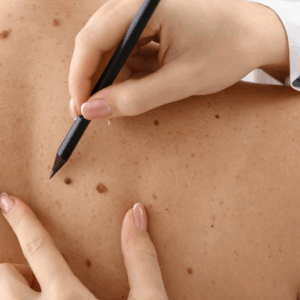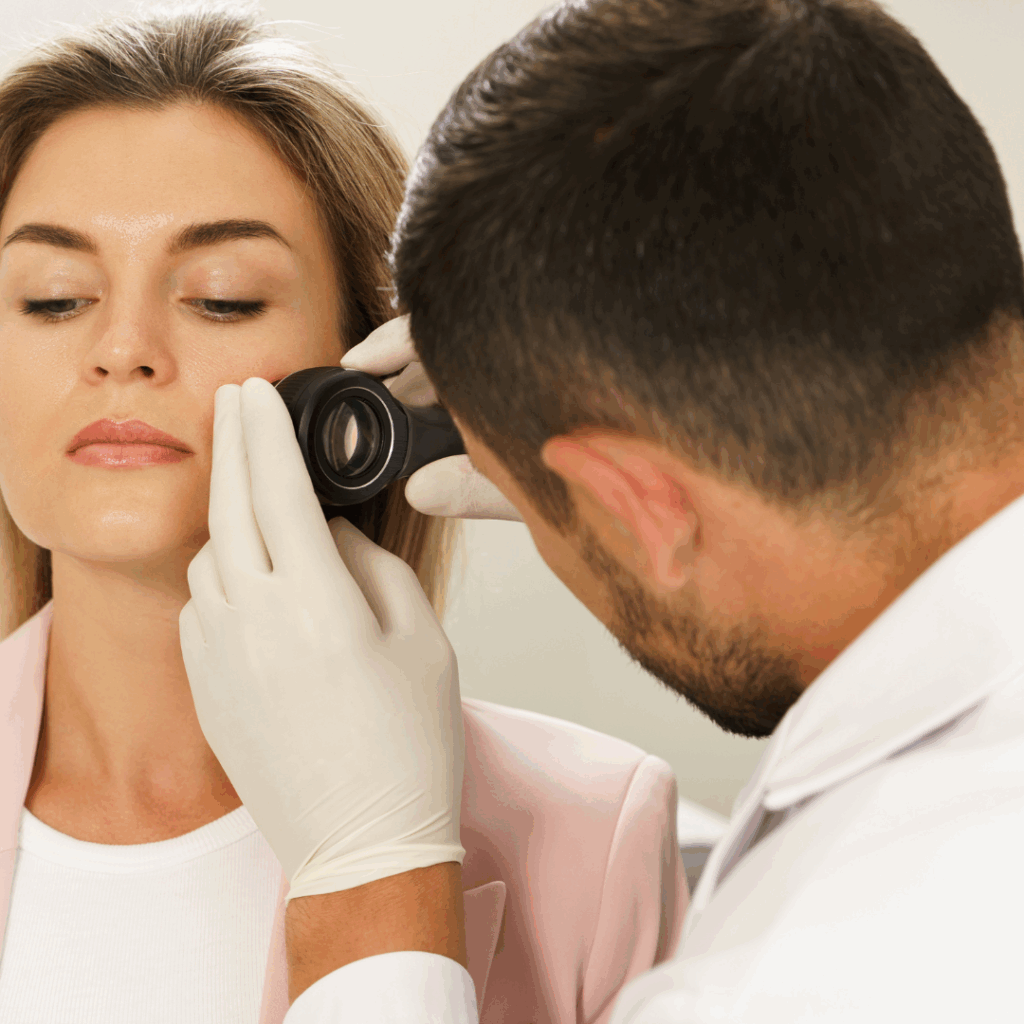
Melanoma vs. Other Skin Cancers: What’s the Difference?
Discover a youthful lift without surgery. Learn how our thread lift at Bryn Mawr Dermatology can rejuvenate your appearance.
Even if your skin looks and feels normal, hidden issues can still develop beneath the surface. Skin cancer is highly prevalent in the United States, affecting 1 in 5 Americans by the age of 70. Fortunately, most skin cancers are highly treatable when caught early.
May is Skin Cancer Awareness Month, making it the perfect time to spotlight the importance of annual skin exams. These routine checks can help detect early signs of skin cancer or other dermatological issues before they escalate. In this article, we’ll explain what happens during a skin exam, why they’re essential even without symptoms, and how Bryn Mawr Dermatology can help you stay one step ahead of skin cancer.
While this article spells out some important information about rosacea, we highly recommend you read the full article, here are the key points we will focus on:

An annual skin exam is a full-body evaluation performed by a board-certified dermatologist to check for any unusual moles, lesions, or other skin changes that may signal skin cancer or other dermatologic conditions. This proactive approach is designed to catch issues early, often before they become visible or symptomatic.
Statistics suggest that early detection of skin cancer can increase the survival rate for melanoma to over 99% when caught in its earliest stages. A thorough exam typically includes a visual inspection of the entire skin surface, from the scalp to the soles of the feet. It may include a dermatoscopic evaluation for closer analysis of suspicious spots.
Symptoms of skin cancer or other skin conditions are not always apparent. Your skin can develop issues beneath the surface that may go unnoticed without a professional evaluation. That’s why annual skin exams are essential. They can detect subtle changes before they become serious. Here’s how they help:
Skin cancer is the most frequently diagnosed cancer in the United States, with over 5 million cases each year. Yet despite its widespread impact, many people are still unaware of the key risk factors that can increase their chances of developing it.
Annual skin exams are one of the most effective ways to detect concerns before they progress. During a full-body exam, a board-certified dermatologist can identify subtle changes or growths that might be missed during self-checks, especially in difficult-to-see areas like the back or scalp. These exams also help establish a baseline, allowing your provider to more easily detect changes in your skin over time. Even when no issues are found, having the peace of mind from a professional evaluation is a powerful step in maintaining long-term skin health.
If your dermatologist notices a mole or spot that appears unusual during your annual skin exam, the next step is typically a biopsy. This involves removing a small skin sample for closer examination under a microscope. The procedure is quick, minimally invasive, and performed in-office. If the biopsy reveals cancerous or precancerous cells, your provider will recommend a personalized treatment plan, including excision, topical therapy, or additional monitoring. The goal is always early, effective intervention to ensure the best possible outcome.
A little preparation can help ensure your annual skin exam is as thorough and effective as possible. These simple steps can make a big difference:
Taking these steps ensures you get the most accurate and complete assessment possible.
An annual skin exam is one of the most important steps for your long-term health, and Bryn Mawr Dermatology makes the process both thorough and patient-centered. Our experienced dermatologists and physician assistants are highly trained to detect early signs of skin cancer, including those that the untrained eye may miss. Whether identifying a harmless mole or recognizing a lesion that requires further evaluation, our team ensures you’re in expert hands every step of the way.
At BMD, skin exams are more than routine; they are essential to preventive care. With locations in Villanova, Collegeville, and Chesterbrook, scheduling a full-body skin check has never been easier. We’re here to support your peace of mind with compassionate care, clear communication, and personalized follow-up if anything suspicious is found.
Schedule your annual skin exam with Bryn Mawr Dermatology today by calling us at (267) 486-3482 or booking online. Let us help you take the first step toward protecting your skin and health.

Discover a youthful lift without surgery. Learn how our thread lift at Bryn Mawr Dermatology can rejuvenate your appearance.

Discover a youthful lift without surgery. Learn how our thread lift at Bryn Mawr Dermatology can rejuvenate your appearance.

Discover a youthful lift without surgery. Learn how our thread lift at Bryn Mawr Dermatology can rejuvenate your appearance.

Discover a youthful lift without surgery. Learn how our thread lift at Bryn Mawr Dermatology can rejuvenate your appearance.

Struggling with acne scars? Discover the best dermatologist-approved treatments for smoother, clearer skin.

Looking to get your body summer-ready? Explore CoolTone and other expert treatments at Bryn Mawr Dermatology. Book your consultation today!

By: Bryn Mawr Dermatology, Published: March 4 2024
Medically Reviewed By: Christine Stanko, MD, FAAD –March 3, 2025
For COSMETIC APPOINTMENTS:
For MEDICAL APPOINTMENTS: